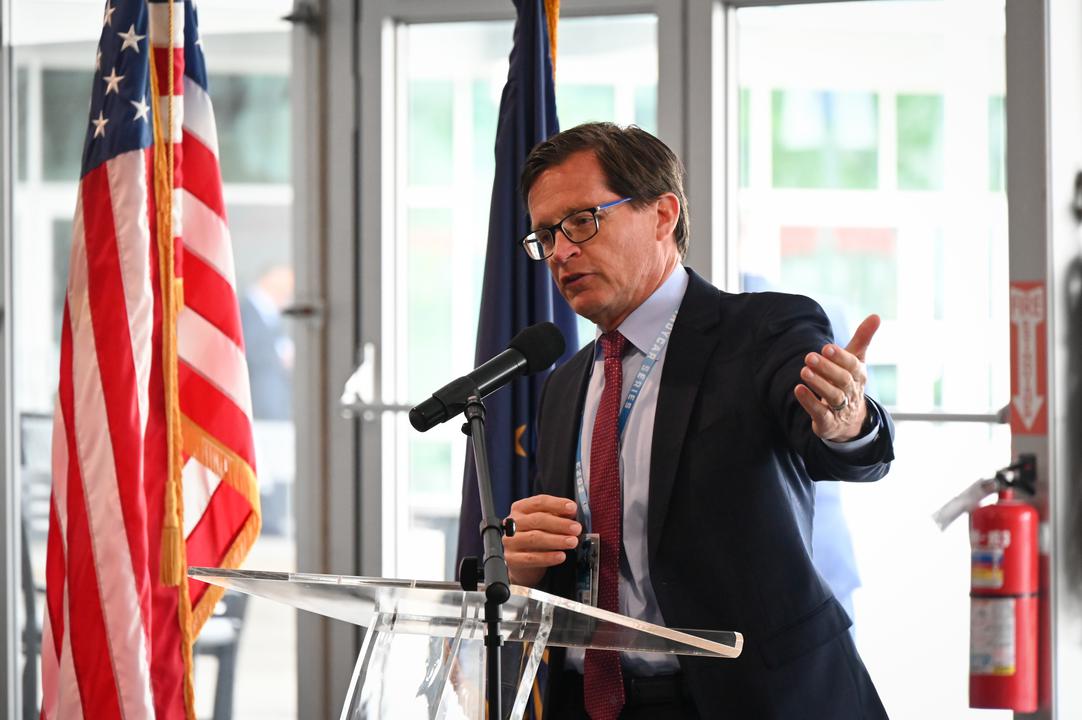J. Douglas Boles has redefined what it means to be the head of a racing venue.
The President of the Indianapolis Motor Speedway is the perfect charming, charismatic and diligent leader to steer the 114-year-old circuit into a new, post-pandemic future alongside Penske Entertainment who took ownership in 2020.
Boles sat down with Podium Life ahead of what is expected to be another well attended 500 to talk about his leadership and how he and his team has coped with arduous challenges.
What is the biggest lesson you’ve learned in motorsport?
I don’t know that there has been one particular lesson I’ve learned in motorsport. I think you learn the importance of focus, and passion, and not giving up on your passion.
You see that through a lot of difference things. Even my first full time job, being asked by Raceway Park to come out and work and they had me manage restrooms.
When he told me that’s what I was going to do there was a side of me that said I’d rather be drinking with my buddies on the weekend.
But then making the decision that I want to be in this sport and sticking with it, and then you look at folks like Tony Kanaan, it took him 12 years to win the Indy 500 but he never gave up.
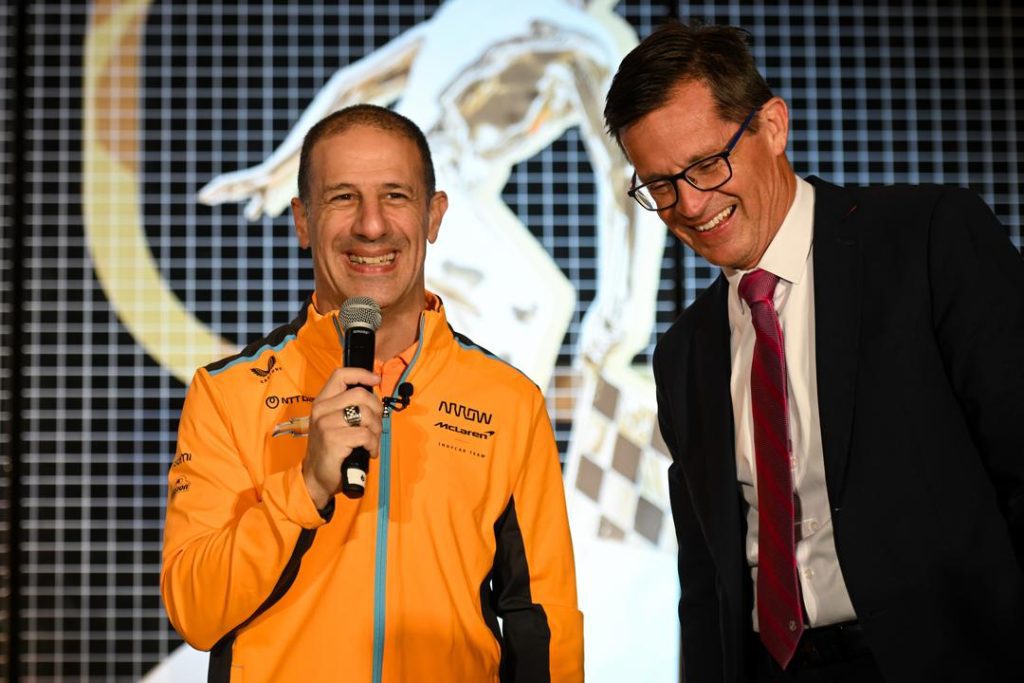
Helio, I had a chance to interview Helio at an event at the museum recently and asked him, did you ever think after you won your third one in 2009 and then you didn’t win your fourth till 2021 that you’re not going to win a fourth? He said no, you just always stay focused.
So I think that’s the biggest thing, if you’re passionate about something, just never give up no matter what the hurdles are. No matter how long the odd seems.
Who are your mentors?
The first one was my dad, he was an elected circuit court judge. Getting to see how he treated people and interacted with them, with the folks that worked for him, and the lawyers he worked with, how he interacted.
It was more about celebrating his people than it was about him.
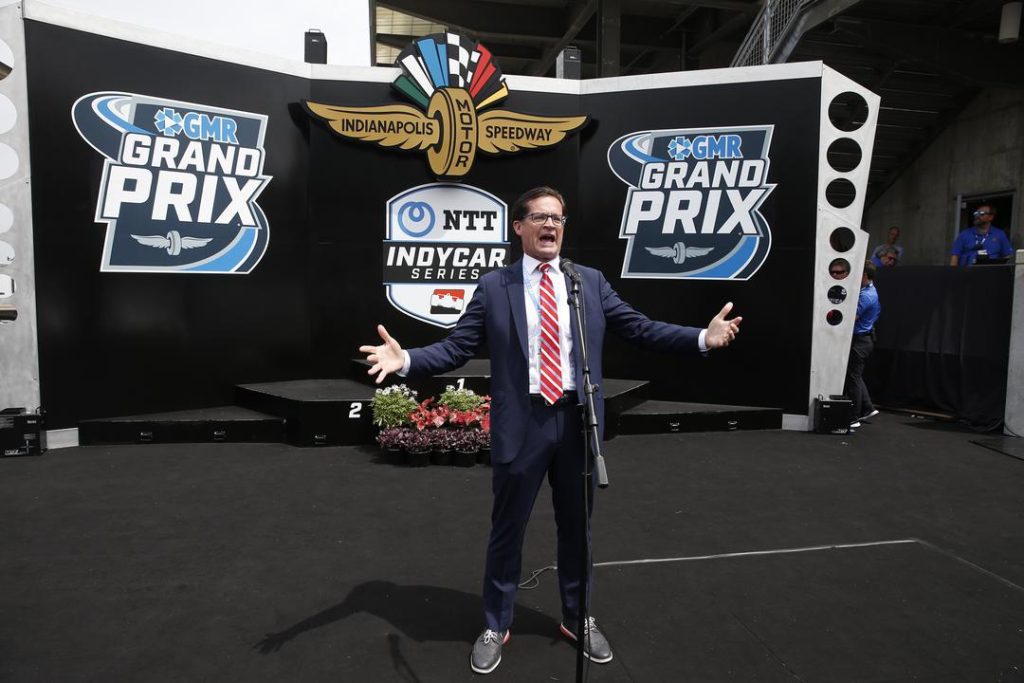
And then my second job out of school was working for a guy who would ultimately become Mayor of Indianapolis.
I was his PR guy and helped run his campaign. Just his work ethic, he was one of those guys, a lot like Roger Penske is today, 24 hours a day, always working, really focused on problem solving. Looked at ways to solve the problem not just talking about why the problem was so bad.
Those were the two people who have impacted me most, I guess.
Roger has a reputation for his work ethic, but have you learned anything from seeing him up close and how he leads that could have helped you?
The reputation of Roger’s work ethic, if you’ve been around the paddock, it’s probably something you know, he and his teams, how well prepared they are, you certainly know it.
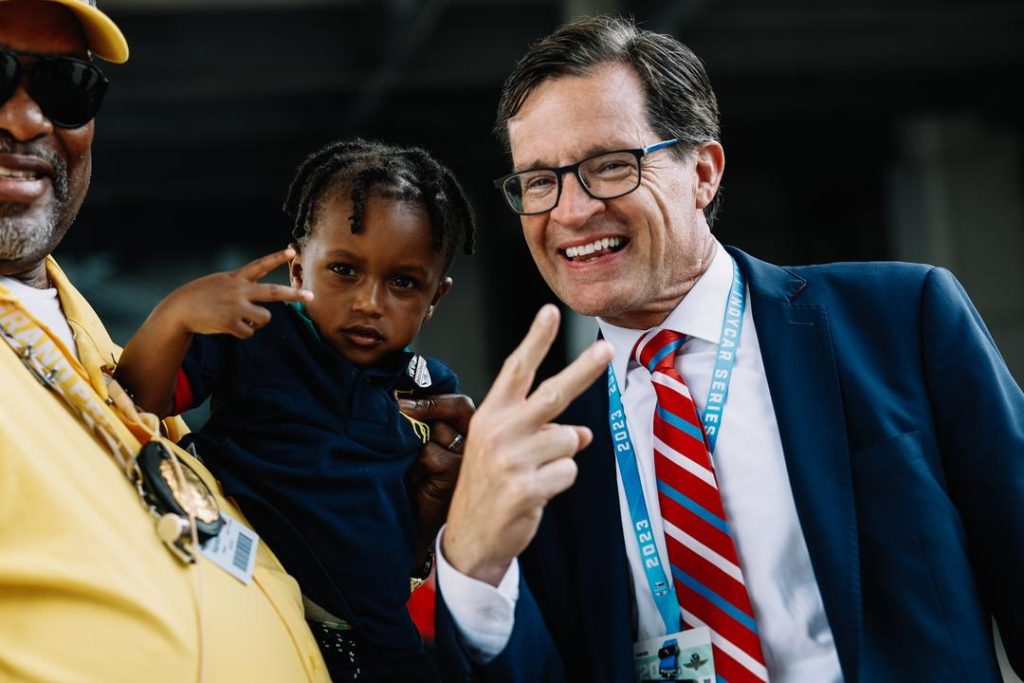
For most of us working with him for three and a half years, you get to see behind the curtain and what makes him tick and that work ethic is truly, the work ethic that you hear about. On some levels there are still things that surprise me every day.
I had a conversation with him last night around 8:30 [Monday] because I wanted to run some things by him and he said ‘OK great, I’ll be there on Wednesday. I’m wheels up at 11 [Monday night], I’m in Europe for an event and then back on Wednesday’.
He just doesn’t stop, he’s always going. And when he comes here and walks the property, the stuff he knows, it really is about work ethic.
He’s super-smart, but his secret sauce I think is that he is going to out-work you and out-detail you. Those are two things that you can’t beat Roger Penske on, the work put in and the detail.
Are there any books, podcasts or films that have shaped your leadership?
I’ve never been a huge reader. I’m more of an observer of people and watching how they interact so I’ve probably learned more from that. I’ll occasionally listen to things and I’ll appreciate them but I haven’t found anything where I have to catch every thing this person says or every thing they’ve ever written.
How did you lead your team and keep them motivated while the world’s biggest single-day sporting event wasn’t allowed to have fans due to the pandemic?
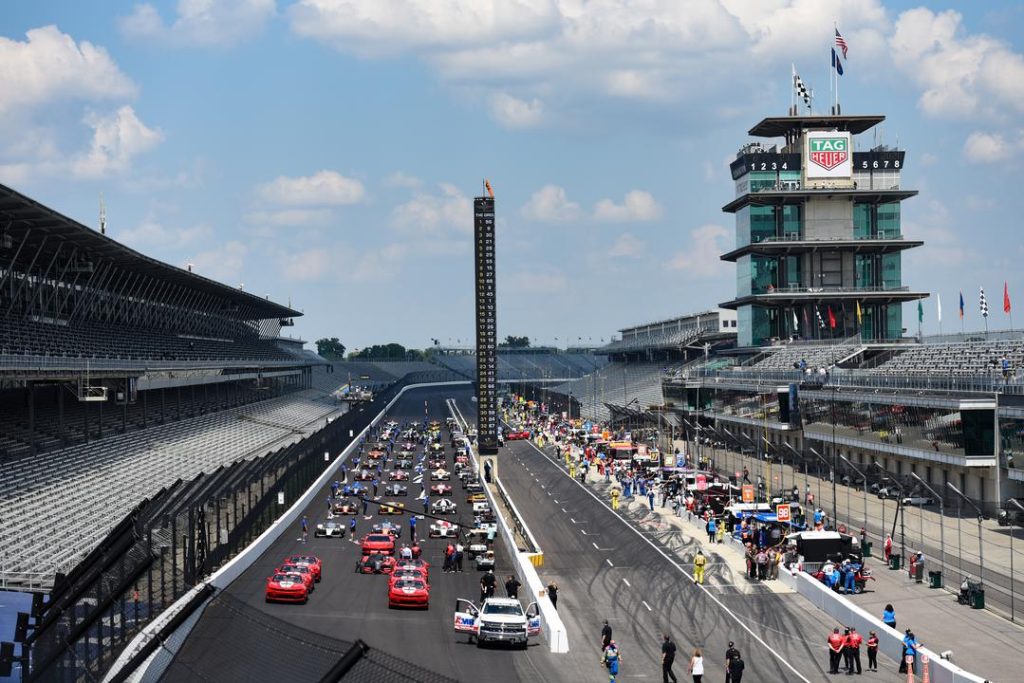
Putting that event on in 2020, honestly with no fans was a lot easier than putting it on with 320,000 people.
But for all of us here, we do the event for the fans, it really is what makes race day special. All these other events are special and it’s great to see cars on track and we love them, but when you walk in here on race day and the gates are open and there’s no one in the grandstands, until the green flag when there’s 325,000 people, that’s what motivates us.
We’ve set the world’s largest sporting stage and all of these people come in. So I think the hardest thing for us was thinking that post-COVID, how are we going to get that feeling back?
Even in 2021 we were limited to 135,000 in the grandstands. It was great to have fans back and it was great to put on a safe event, everything you want to do early, post-COVID, but we all kind of thought, it’s not what it’s supposed to be.
So last year in 2022 was the first year for all of us to celebrate.
The best thing about the team here is that they’re super resilient, they’re super passionate about what they do and my job’s easy because there’s so many people that are so good about it. It really is about opening the doors to 325,000 people from 35 countries and 50 states, that’s what makes it so special.
On a similar note, everyone who works here has extremely high standards as people have on the outside for Indianapolis Motor Speedway. How to do help your team cope with that expectation?
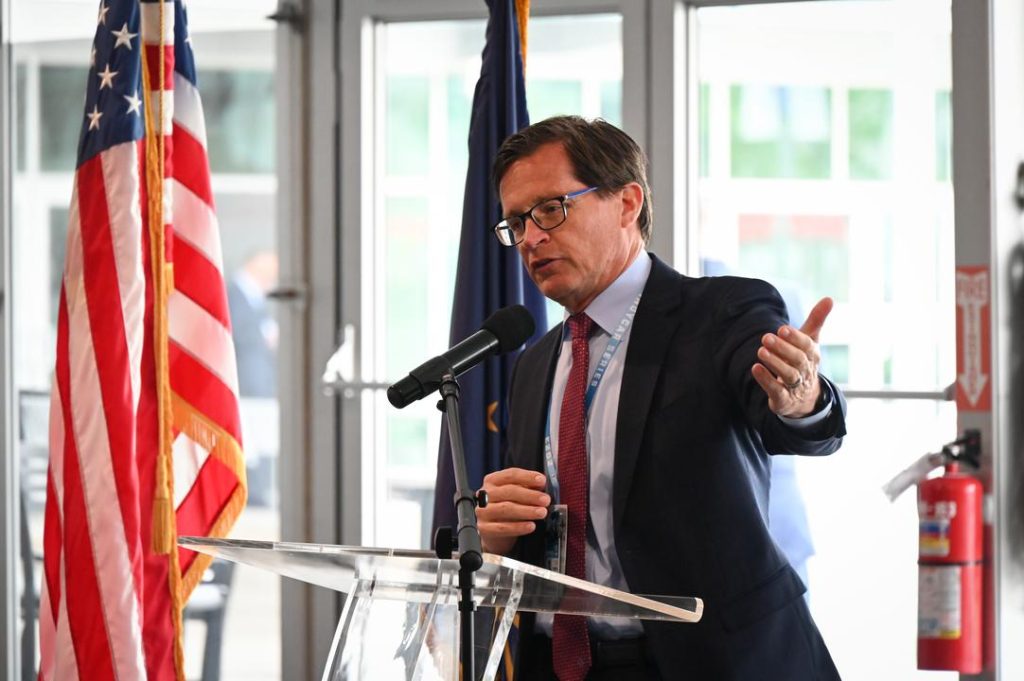
I always try and remind people to have fun in what we’re doing. We can all look around at people we went to school with or grew up with who are in these other jobs, we have the coolest jobs in the world.
The idea that we get to do this for a living, to wear the wing and wheel on our clothes, and we all experience it where we’ll go to the grocery store or the gas station and someone sees the wing and wheel on your shirt and they want to tell you their story.
And so I think the pressure that we have, we all sort of put it on ourselves because we all know we are representing something much larger than ourselves.
Something that’s super-important to our city, to our state, the tradition of it, so really it’s about reminding people to gave fun in what we do.
We try to have a gathering after every event where we can tell stories. In the course of an Indy 500 day, you have a lot of things that go right and you have a lot of things that don’t go so right and you have some crazy things that you can’t believe happened.
Having teammates to share that with and work through that with is what it’s all about.
So the culture is the hardest part to build and it’s also the most fragile part, but the most important part to the success of the Speedway.
What is the future of motorsport?
To answer that question, I’d go back to 1909 when the track was built!
The track was built to test the new technology of the day, and when Carl Fisher built the track the new technology was the automobile.
He wanted a platform and a location where people from all over the world could bring their cars and showcase them against other cars. His challenge or what he wanted to do was really show that Indiana and America could build a car to compete with Europe. That’s what it was about.
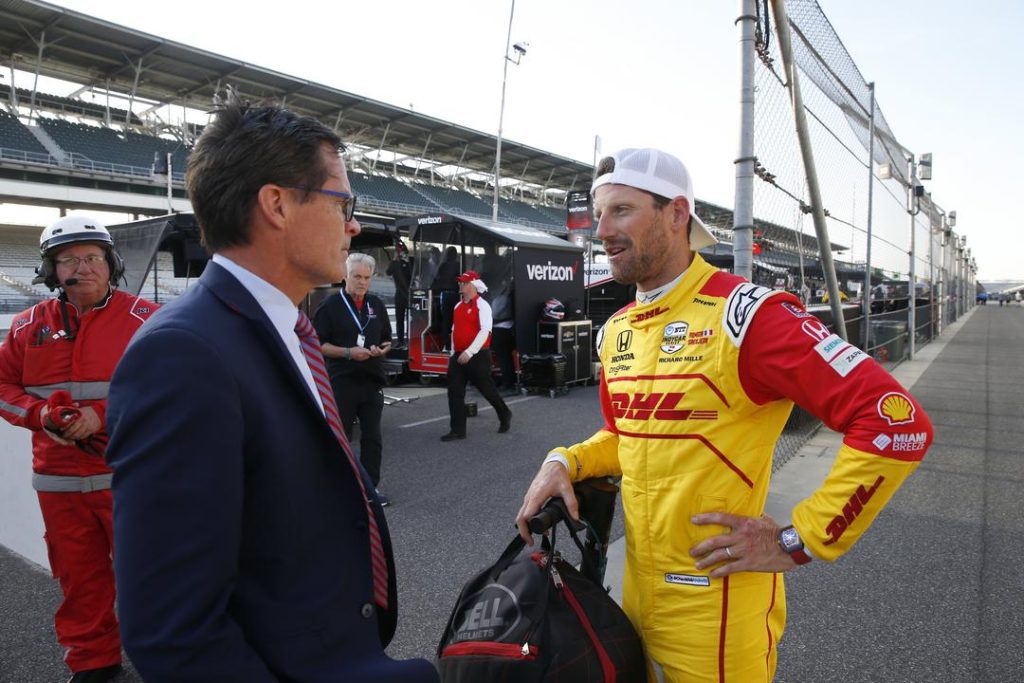
Over the last four or five years that’s what we’ve started to think about, that it’s still in our DNA.
Whether it’s thinking about the sustainability challenges that we have, whether it’s thinking about tire technology, or what’s the new computer technology that’s helping run these race cars. We still continue to test the new technology of the day.
While I can’t predict the future, what I hope our role in it and frankly motorsport’s role in it is to continue to test that new technology of the day and engage people through motorsport, in whatever that is.
The sustainability efforts at the Speedway are obviously important to you, would you say that is how it is driven?
It’s personally important, but it starts at opposite ends of the age spectrum. It starts with an 86-year-old leader who is fully committed to it and you can see that in his organization.
It starts with young folks in our team who have been committed to it since they can remember, they don’t know any different in the organization.
When you bring those two polar opposites in age together with the same ideal, it filters from the bottom and top into the organization.
It doesn’t take long for the rest of the organization to realize this is important, we have a platform, how do we use it?
So it really doesn’t come from Mark Miles or Jay Frye or Doug Boles, it comes from Roger Penske, and then the young professionals in our organization who haven’t known any different, and said we need to move this 114 year old facility along and it’s been pretty amazing.
A lot of us when the conversation first started were like ‘we can’t get 325,000 people to recycle! What are you talking about, there’s no way!’.
Then when you start doing it and you start hearing from those fans that you didn’t think would do it saying thank you for helping us do this, you also realize we can really do something.
